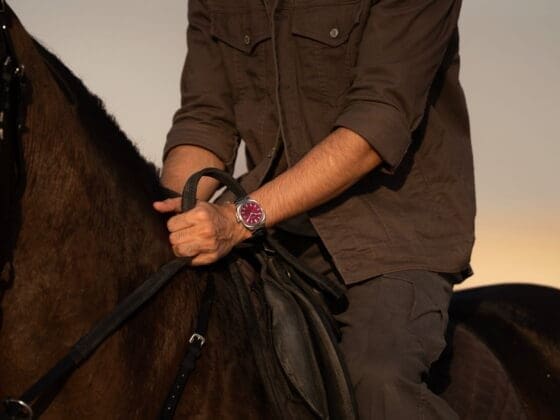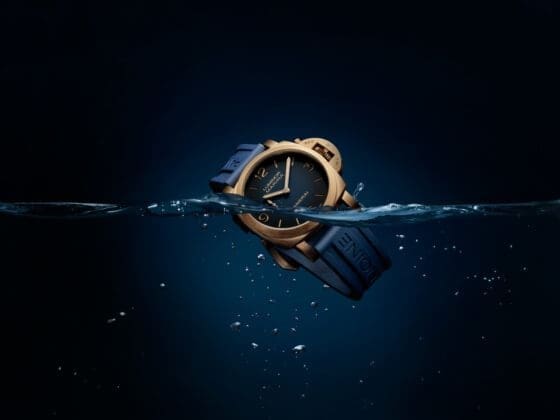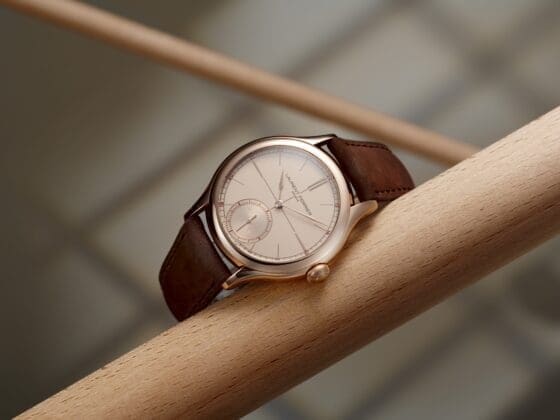Vacheron Constantin, in collaboration with Rolls Royce, has created a unique Les Cabinotiers Armillary Tourbillon timepiece designed to complement the interior suite the unique Rolls Royce Coachbuild commission – Amethyst Droptail. While Vacheron Constantin’s archives reveal that a watch was commissioned for an automobile in 1928, the new timepiece represents a first in the company’s modern history.
“The two centuries-old brands share a quest for perfection that consists of constantly pushing the limits of feasibility”, explains Christian Selmoni, Vacheron Constantin’s Director of Style and Heritage. “This philosophy is an excellent catalyst for innovation and good taste, both technically and aesthetically.”
The timepiece is the result of a special request from one of its client who also happens to be the one commissioning the Amethyst Droptail. As per the clients request, it had to be displayed on the fascia, blend seamlessly into the motor car’s highly bespoke interior, housed within an elegant, fully integrated yet removable holder mechanism, and meet exacting engineering standards for shock resistance and robustness.

This unique timepiece is equipped with the exceptional calibre 1990, a hand-wound in-house complication movement incorporating certain technical developments derived from Reference 57260, the most complicated timepiece in the world presented by the Maison in 2015. This choice was notably influenced by the bi-retrograde display with instantaneous return of the hours and minutes.
This function is reminiscent of traditional motor car speedometers featuring sweep hands. The hands return to zero at startling speed, but not without exerting a great deal of tension. This particularly demanding mechanism requires special attention to ensure the accuracy of the display and the resistance of the materials used. In this case, the hands are made of titanium, which is extremely light and sturdier than steel.
In addition, this type of configuration with time-related indications on the upper part of the dial provides all the space needed for the mechanical ballet of the tourbillon. On this model, the latter appears in a complex “armillary” version, a nod to the work of 18th century French watchmaker Antide Janvier who invented a moving sphere with a planetary gear known as an armillary.

The construction of this type of regulator consists of two nested carriages rotating around two different axes at a speed of 60 seconds per rotation to form a sphere in perpetual motion. Given the watch’s vertical position on the car fascia, the presence of such a regulator at the heart of the mechanism is fully justified. The tourbillon was developed at the beginning of the 19th century precisely to remedy the isochronism problems affecting the balance-spring of pocket watches, which were also generally vertically housed in a fob.
The cylindrical balance-spring coupled to the balance is another technical feature of this timepiece’s mechanism. Invented by Jacques-Frédéric Houriet in 1814, this type of balance-spring without terminal curves – a particularly rare phenomenon in contemporary watchmaking – gives the tourbillon a perfectly concentric beat, thereby also ensuring enhanced isochronism and hence remarkable precision.
To transmit the impulses corresponding to a rate of 18,000 vibrations per hour (2.5 Hz), VC has developed an escapement consisting of a silicon escape-wheel and pallet-lever with diamond pallets – both materials that reduce friction without the need for lubrication to enhance the mechanism’s reliability. This performance is all the more remarkable in that the instantaneous double retrograde mechanism requires driving torque throughout the power reserve.

For practical reasons, the crown has been deliberately oversized to facilitate winding and ensure a 58-hour power reserve. Positioned at 12 o’clock, it is reminiscent of vintage hand-wound chronometers, just as the minutes track recalls traditional speedometers.
The nack of fitting mechanical movements inside a motor car is altogether new for VC’s mechanical engineers, who had to develop a holding mechanism that would meet the precise dimensions of Amethyst Droptail’s fascia compartments. The holder was also designed to be removed from its housing if necessary and to allow the watch to be rotated through 180° for setting,winding and admiring the reverse of the calibre.
The holders’ slightly curved outer frame is made of polished steel, with a bevelled steel inner frame laser-textured with a black PVD coating. The base watch is affixed to a white gold base-plate, adorned with a hand-crafted sunburst guilloché motif featuring an applied Maltese cross. The holder can be covered with a steel lid, secured with a Maltese cross-shaped lock. When the watch and holder are removed from the fascia and placed in their box, an identical empty holder takes its place.

The sapphire dial of the timepiece reveals the full beauty of Calibre 1990, including a mainplate featuring a mauve-coloured NAC galvanic coating with a circular satin finish – an original shade matching the hue of the car’s leather seats. On the dial side, the bridges are sharply cut, hand-bevelled and adorned with a Côtes de Genève pattern also found on the rear-side bridges in the same mauve colour.
The watch and its accessories can be kept in a display case in the same Calamander Light open pore wood and the Amethyst leather used for the interior of the Amethyst Droptail. The interior of the case itself is slightly curved like the motor car’s fascia.

This one-off Vacheron Constantin Les Cabinotiers Armillary Tourbillon watch was delivered with the car in August.









